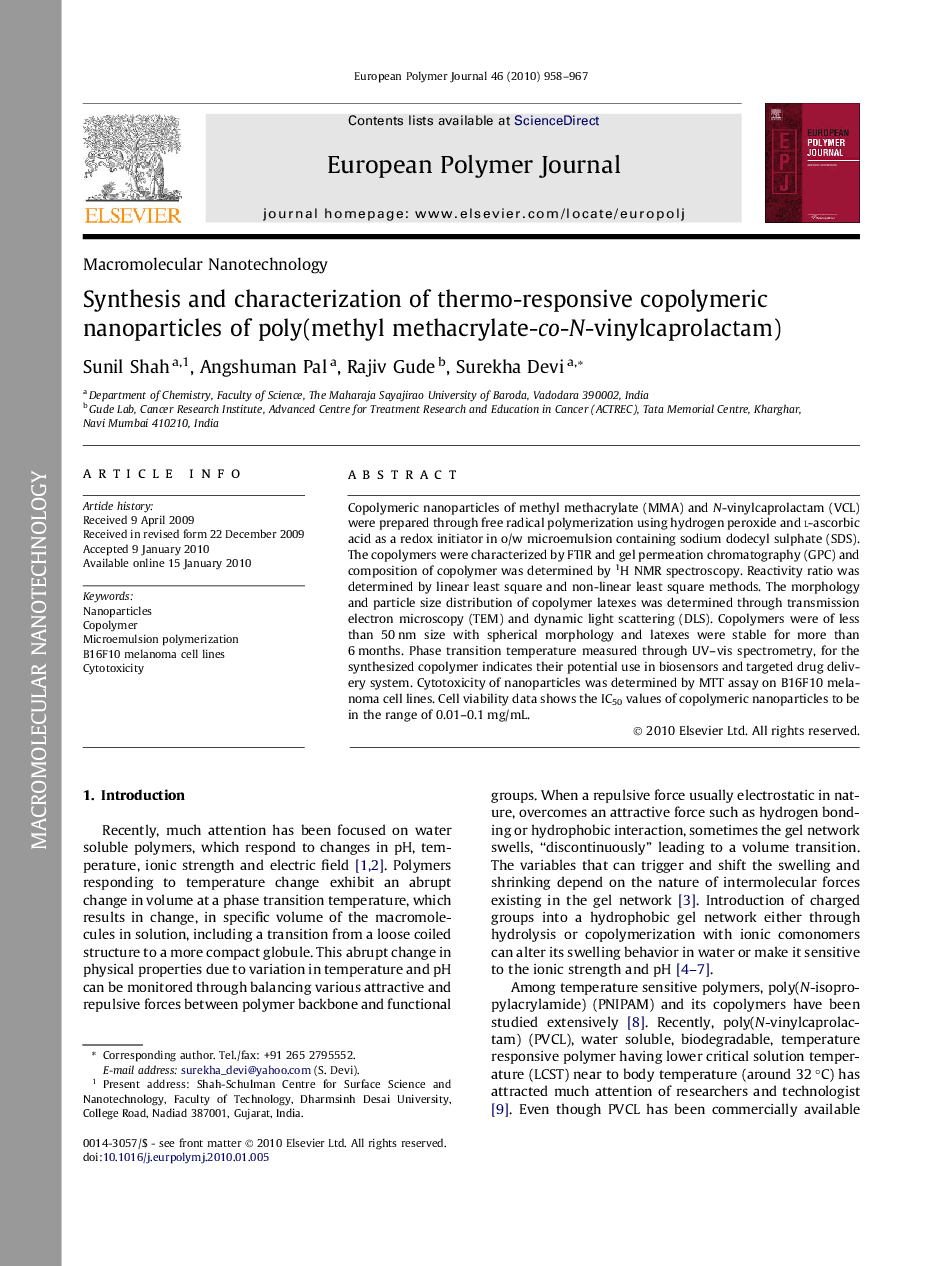| Article ID | Journal | Published Year | Pages | File Type |
|---|---|---|---|---|
| 1396085 | European Polymer Journal | 2010 | 10 Pages |
Copolymeric nanoparticles of methyl methacrylate (MMA) and N-vinylcaprolactam (VCL) were prepared through free radical polymerization using hydrogen peroxide and l-ascorbic acid as a redox initiator in o/w microemulsion containing sodium dodecyl sulphate (SDS). The copolymers were characterized by FTIR and gel permeation chromatography (GPC) and composition of copolymer was determined by 1H NMR spectroscopy. Reactivity ratio was determined by linear least square and non-linear least square methods. The morphology and particle size distribution of copolymer latexes was determined through transmission electron microscopy (TEM) and dynamic light scattering (DLS). Copolymers were of less than 50 nm size with spherical morphology and latexes were stable for more than 6 months. Phase transition temperature measured through UV–vis spectrometry, for the synthesized copolymer indicates their potential use in biosensors and targeted drug delivery system. Cytotoxicity of nanoparticles was determined by MTT assay on B16F10 melanoma cell lines. Cell viability data shows the IC50 values of copolymeric nanoparticles to be in the range of 0.01–0.1 mg/mL.
Graphical abstractCopolymeric nanoparticles of methyl methacrylate and N-vinylcaprolactam were prepared through o/w micro emulsion. The results indicate their potential use in biosensors and targeted drug delivery system.Figure optionsDownload full-size imageDownload as PowerPoint slide
